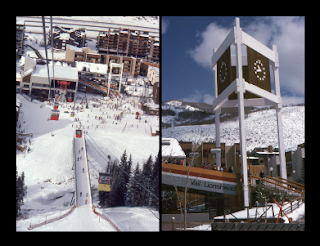 Another set of options for creating movements in space or movements of objects plays with our point of view. When we're looking at anything, there are always different vantage points to utilize. We can have a moving effect on the viewers of our slideshows and movies by taking a different view of what we're showing them. When we're dealing with lots of charts, graphs, illustrations and photos, we forget to consider other vantage points. There's nothing more to show the viewers by looking at a 2-D object from it's side or from far away.
Another set of options for creating movements in space or movements of objects plays with our point of view. When we're looking at anything, there are always different vantage points to utilize. We can have a moving effect on the viewers of our slideshows and movies by taking a different view of what we're showing them. When we're dealing with lots of charts, graphs, illustrations and photos, we forget to consider other vantage points. There's nothing more to show the viewers by looking at a 2-D object from it's side or from far away.When we're thinking in three dimensions, there are lots of different views we can use:
- Overviews of relative positions, distances, locations, zones and paths
- Close-up views of details, components, interfaces
- Inside views of hidden dynamics, internal processes
- Side views of layers, levels, rankings, underlying structures
- Long views of evolving trends, scouting reports
- Process views of cycles, fallout, interactions
- Juxtaposed views of a game board & dashboard or a territory & map
Whenever we're showing a change in viewpoint, we've entered the realm of narrative possibilities. Engaging stories often put different viewpoints in conflict and work through changes in one or more ways of seeing things. When we add this dimension to our animation strategies, we can consider using movements to show:
- changing from one view to another, as if we finding a better vantage point, taking higher ground or moving to a better place
- getting out of a fixed point of view, as if we've been stuck in one location, trapped by confining evidence or prevented from changing outlooks
- opposing a view that appears to narrow, as if we're expanding our outlook to become more panoramic, inclusive and complex
- reversing outlooks, as if we're facing the wrong direction when we over-rely on past history to predict the future or on obvious symptoms to diagnose problems
- realizing a different view could be useful, as if we're utilizing different views to better diagnose problems, make decisions and formulate better decisions
- getting oriented in a new view, as if we need time to familiarize ourselves and get comfortable with a new way of seeing things
- combining points of view to benefit from both outlooks, as if we're creating problems for ourselves until we see both sides as valuable
When we play around with our own points of view like this, creating presentations will prove to be a moving experience for us. Then moving the audience to our point of view will simply share what's it's been like to formulate our slide show or movie.
No comments:
Post a Comment